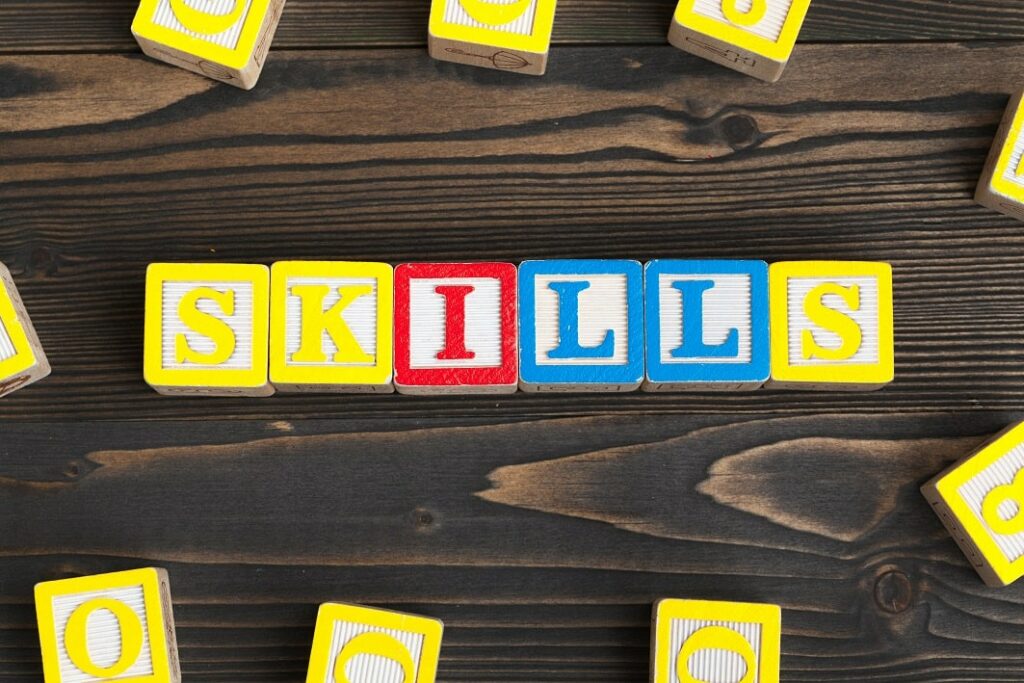Publish Date - January 21st, 2022
|Last Modified - October 23rd, 2023
Adult learning is becoming more popular in the age of remote learning, digital degrees, and online exams. Therefore, it’s no wonder that massive websites like Coursera, Udemy, Udacity, and edX Online Learning have exploded, especially during the COVID-19 pandemic. However, one thing that continues to baffle the minds of recruiters, hiring managers, and candidates alike is whether these courses can provide you with the skills to succeed and add value and purpose to a particular job, role, or field.
When I dwell on this, the question that comes to mind is at what point does a person who’s a competent performer can actually be deemed an expert or novice in their field? To answer this question, I go back to my PMI-ACP(R) Certification and remember the Dreyfus model of skill acquisition – or, more accurately, the Novice to Expert Scale in the model’s Five Stages of Acquiring Expertise.
To dig deeper into my question and thought experiment, let’s lay some context about all the inner workings of the Dreyfus model of skill acquisition and how understand the Dreyfus model can benefit you.
What is the Dreyfus model of skill acquisition?
While it goes by many names, including Dreyfus model of skill acquisition or just Dreyfus model, this model was created by brothers Stuart and Hubert Dreyfus at the University of California, Berkeley for the sole purpose of classifying pilots and other skilled professionals in particular stages of learning and their overall level of expertise in a particular skill. Note, the model is meant to encapsulate adult learning, since child and adolescent learning is completely different.
At its core, the Dreyfus model breaks down how good someone is at a certain skill based on a number of factors. These all eventually culminate into an “expert” or “master” who is deemed intuitive at a particular skill.

The model has been adapted by many different professionals, chess players, and even philosophers! Some more common examples include Dr. Patricia Benner’s stages of clinical competence in nursing (1982), and the International Clinician Educators Network (ICE) that breaks down the aspects of development stages for clinicians. ICE takes a holistic approach to analyzing what it takes for a clinician to be considered an expert.
Whether it’s nurses, pilots, or doctors – the Dreyfus model is based on the below four binary qualities, which dictate what level a person is at in their skill development:
- Recollection (Situational vs. Context-free)
- Perspective (Chosen vs. Experienced)
- Decision (Procedural / analytical vs. intuitive)
- Commitment (Monitoring vs. Absorbed).
The model uses these qualities to classify when a person moves on to the next stage.
Dreyfus Model with Qualities
| Skill level | Components | Perspective | Decision | Commitment |
|---|---|---|---|---|
| 1. Novice | Context-free | None | Analytical | Detached |
| 2. Advanced Beginner | Context-free and situational | None | Analytical | Detached |
| 3. Competent | Context-free and situational | Chosen | Analytical | Detached, understanding and deciding. Involved with outcome |
| 4. Proficient | Context-free and situational | Experienced | Analytical | Involved understanding. Detached deciding |
| 5. Expert | Context-free and situational | Experienced | Intuitive | Involved. |
As you can see, with respect to the four binary qualities, as a person becomes more skilled at a particular level, their recollection, recognition, decision-making, and overall awareness of that skill evolves.
An advanced beginner, for example, can grasp situations much more easily than a novice. Similarly, what sets an expert apart from all the other skill levels is their ability to be aware and absorb vast amounts of information with respect to that particular skill.
While this all sounds great, I can’t help but ask: What do each of these skill levels mean and how do they relate to the real world?Never fear the reader, for I shall give you a definition of each of these “personas” and provide several real world examples below.
Dreyfus Model breakdown, with real world examples!
Here are the five developmental stages of the Dreyfus model with real world examples:
Stage 1: The ‘Novice’:

The novice is someone who takes up a particular skill without knowing and generally understanding much about it. Because of their lack of knowledge, they are “context-free”, which can be of benefit in the sense that they have very little bias when starting out.
Novices tend to be very attached to the rules, and abide by them strictly so that they can succeed in a particular task. Each task is done with particular precision and methodology, because the novice thinks analytically. While there is nothing wrong with thinking analytically, the novice falls back on the data due to their lack of real world experience in this stage. The novice will also need a teacher or mentor to help support them in most of the activities around the skill. Without this support system, they may struggle to evolve to the other stages within the model.
Real world example:
Since the novice has an inability to fully understand and comprehend the scope of a particular skill, they will stay within the rules of any given task. You may see this as someone who completes a couple of Coursera courses and grasps the concepts, but not quite the actual skill yet.
In the job market:
An intern would be the best example of this. While not everyone is the same (and there will be some outliers of individuals who evolve into advanced beginners and competence quickly), most interns will abide by the rules set by their manager and the organization so that they can absorb knowledge while gathering experience.
For example, an intern that I worked with once was given the opportunity to learn how version control works in GitHub and how to deploy code through a pipeline (a combination of using docker for a local environment, deploying the code to staging environment via Jenkins configuration, and then a subsequent deployment to production) all through to command line. During their tenure, we wrote out the steps (GitHub commands and Jenkins builds) so that they could learn how it works. By the end of their internship, the intern had an understanding of how to deploy his code to production and could do it on their own. However, they still lacked the understanding of how to troubleshoot issues (like rebasing a branch, or doing a hard reset).
In theory:
My favourite analogy for the novice is someone learning how to write an essay. In elementary school, you learn to write an essay with an introduction, three body paragraphs, and a conclusion. You don’t deviate from that and you focus on building out these five paragraphs to appease your graders.
Stage 2: The ‘Advanced Beginner’:

This is one of the most interesting and important archetypes within the Dreyfus model. The advanced beginner is a step-up from the novice in many aspects, but is still defined by the rules provided by the instructor or mentors. The advanced beginner starts to think more situationally, because of their gained experience. However, their decision-making and commitment to ownership of issues within the skill is still infantile and needs support.
In the job market:
I think the perfect person to encapsulate this role is an entry level data analyst, or entry level web developer. They have a good, fundamental grasp of what they’ve learned in school and maybe an internship, and they’re able to apply these basic skills to task completion. However, more often than not, they’ll accomplish these tasks to the absolute degree that is asked and nothing more.
Real World Example:
To drive this example home: Typically, new web developers may be asked to design a web page or a particular functionality for an application. While they’re comfortable with a particular coding language, building procedures, and perhaps a few testing strategies, their overall experience might now allow them to build a seamless web application that’s fast, or intuitively ask questions about integration of other applications. Ultimately, their skill at this level will not allow them to take ownership of issues that may arise, because they do not truly feel comfortable within this skill yet. Therefore, the advanced beginner developer will need a senior developer or a manager to help support their activities.
The difference between an advanced beginner and novice
I personally think that the advanced beginner grasps concepts more quickly because they understand the fundamental concepts. This allows them to begin to ask relevant and important questions, which is crucial to evolving any skillset. This is the core difference between the novice and the advanced beginner: While the novice understands the rules and the playing field, the advanced beginner is more comfortable within it and begins to grow and branch out.
However, both the novice and advanced beginner have a very analytical approach, which correlates with their inexperience.
In theory:
Carrying on with my essay analogy, as an advanced beginner, you’ve now had some time as a novice and written a few essays. You’re feeling brave and more confident, and begin to experiment with a different style of writing and the structure of each individual paragraph. Perhaps this means adding five body paragraphs instead of three, but still staying within the confines of the introduction, body, and conclusion of the traditional essay. You may even begin to use analogies and metaphors in your content as you begin to comprehend and grasp writing skills more broadly. However, you still need to be guided and supported as you circumvent the world of writing.
Stage 3: ‘Competence’

One of the most interesting and ambiguous expertise levels, a person will reach competency when they have considerably more experience in that particular skill vs. the advanced beginner. Due to their increased tacit knowledge gathering in the previous level, eventually the competent person will find it difficult to deal with all of the rules and regulations provided by the skill and, therefore, begins to adopt a new understanding of it.
In summary, the competent person has a high understanding of the skill, and can easily interpret hierarchical situations and deduce an outcome based on their experience and customization of the rules.
The key competency of a competent person is their ability to problem solve. They will create a logical framework in which they approach problems within the skill. “If I encounter a problem, I will analyze it, look at all my options, choose the best one, and execute it to the best of my ability.” To achieve this, the competent person needs to have the following skill sets:
- Be comfortable with the particular skill to thoroughly understand all options when confronted with a problem.
- Choose the appropriate action to the best of their ability.
- Commit to their choice and believe it’s the best one for that particular problem.
- Draw on previous experiences to ensure success.
The competent person will learn through repetition and continually make mistakes. However, they will evolve, and eventually make less mistakes as they understand more about the skill. Their decision-making process is ultimately what sets them apart from the advanced beginner and novice.
An example of a competent worker:
You may or may not be surrounded by competent workers. While telling who is a competent worker is tough, the one way that I think of a competent worker is someone that you can give a task too that will get accomplished. For example, at my current job, I always reach out to “Primes” who I know are hardworking and knowledgable about their domain. I would consider these folks competent, since they are definitely not beginners, but may not be “proficient”.
In the job market:
Many individuals in the job market are competent. You can tell when an employee is competent at their job when they’re comfortable within a particular skill, and can deduce multiple strategies to solve a problem. Digital marketing is a perfect place to showcase competent learners. For example, as an eCommerce digital marketer, you may have multiple channels operating on a campaign. However, you’ve noticed that you can’t actually tell what channels may be generating revenue vs. others. Therefore, you decide to create strategies and flows to map each channel to ensure that you can see if it’s your email marketing, paid-per click advertising, or SEO that’s actually making your website money. This concept of step-by-step procedure is what characterizes competent learners and the fact that they sometimes own their decision and will stand behind it.
Difference between the advanced beginner and competence
I would say there’s a vast difference between these two learning levels. The advanced beginner still follows the rules and regularly needs guidance, whereas the competent learner can create their own strategies and deduce an outcome, and then live and learn with their decision to become better. Due to this scientific approach, the competent learner also sets goals that they can understand and are attainable. In contrast, the advanced beginner may have a set goal, but not fully understand how to approach it.
A similarity between the two learning levels is that both actually grasp the skill and its boundaries (with the competent learner beginning to experiment living outside the rules).
In theory:
You’re still writing that darn essay. However, you now begin to structure it based on the question, not necessarily in the traditional way of writing an essay(with an introduction, body, and conclusion). While there might be aspects of these concepts embedded in the content, it may not be clearly followed or evident.
On a personal note, I would classify myself as a competent person in Agile, based on my experience and understanding of how it can govern projects. When tasked with solving the problem, I break down the problem and then think through the logical steps for an outcome. I’m pretty invested in the outcome, which means I’m taking ownership of my decisions and standing behind anything I do.
Stage 4: ‘Proficient’

When the competent performer begins to grasp the overall fundamentals of a skill (like the laws of physics, or mathematics) and creates maxims within that skill, this is when they begin to transition into proficiency. While proficient performers still use a logical deduction strategy to break down problems, they’ve created maxims that allow the performer to better cope and deal with situations. Experience is the key determinant between a competent performer and a proficient one.
Example of a proficient person
I think that this is the toughest one to differentiate, because the line between competent performer and proficient performer is so thing. Many usually get this confused, so my take on this is – a proficient person is someone who you know will get the job done well. A competent person may have average outcomes when given a task. That’s not to say that a competent person is bad or worse than proficient person – but the act of the outcome is generally what sets these two apart.
In the job market:
Since both are analytical, situationally aware, and involved in the outcome, it’s tough to see which one is which. The easiest way to tell is to understand how a proficient performer created their own maxim within a particular skill. For example, back to our digital marketer’s campaign, due to the experience of a proficient performer, they likely wouldn’t have made the mistake of missing the correct channel tracking of their campaign because:
- They understand that the purpose of marketing is to drive traffic to their client.
- If they miss the tracking, they realize that they’re unable to distinguish what’s working and what’s not.
- They’ve done campaigns like this before.
In simplest terms, the proficient performer is one-part efficiency and one-part experience as they know how to execute things properly.
Difference between competence and proficiency
As I mentioned earlier, one of the major differences between these two kinds of performers is experience. Where the competent performer relies on the rules and will deviate from them slightly, the proficient performer is more emotionally invested from their creation of maxims for that particular skill, which they will draw upon time and again.
A similarity for both is that they still need to deduce logically and break down what they’re doing before taking action.
In theory:
Our essay writer has now evolved into a reporter, and has written enough articles to know that they’ll write a fantastic piece even if their content is not structured to traditional measures. They realize that the purpose of an article is to convey a message well, and to do this you only need to deduce the right combination of content structures that makes sense for the reader.
Stage 5: ‘Expert’

With enough experience as a proficient performer, you will gradually begin to blur all rules and maxims and transcend your overall ability into an expert. Deduction, decomposing things into subclasses, and maxims begin to disappear as the performer becomes attuned with the skill. They become an expert that is able to intuitively and effectively respond to every situation with a high degree of efficacy.
Example of Experts:
It’s hard to find a true expert in something. The reason is, once someone becomes competent or proficient, they usually move into some sort of leadership position that doesn’t require as much hands on work. Ultimately, I look towards trades people for considering experts. These are usually your high performing plumbers, carpenters, electricians with 20+ years of job experience, and they can just sense the problem and troubleshoot it. One thing to keep in mind is, years on the job is not necessarily indicative of skill. Ultimately, what you want to see is the outcome. Does the expert, time and time again always produce strong outputs at a quick pace? If yes, then they may be expert or proficient.
In the job market:
While it’s difficult to showcase an expert in the workforce, you’ll need to be on the lookout for someone who knows how to solve every problem within a particular skill, and is essentially the go-to-person in case there is a problem. In the world of web development, although they may not be an expert, chief architects, engineers, and principals are usually the experts because of their years of experience and skill. For them, based on their experience, every problem has a solution that can be applied instantly, which is usually the best course of action.
Difference between proficient and expertise
As stated before, one of the biggest differences between these two performers is experience. Where the competent performer relies on the rules, and will deviate from the slightly – the proficient performer is more emotionally invested due to the creation of maxims for that particular skill that the proficient performer will draw upon time and again. A similarity is, both will still need to deduce logically and break down what they are doing before the act.
In theory: Our essay/reporter person now knows what to write and what people will like. They no longer need the guidelines of the novice or the maxims of the competent performer because they can intuitively respond to any issues, challenges, or problems that come up. Think of an editor who has been at a newspaper for years, or a professional freelancer who can structure an article well while writing it because the content just makes sense and flows. This is what it’s like to be an expert.
Wrapping it all up: Why should you care about the Dreyfus model and what does it mean for you?
With adult learning, including online degrees and exams, becoming extremely popular in our digital world, it’s natural for hiring managers to begin to wonder about their value and benefit on the job. This is especially so in that online certifications and courses are beginning to appear more often on people’s resumes. To help us explore this question a bit more and understand the point at which a person becomes an expert in their field, we can turn to the Dreyfus model.
Created in 1980, the Dreyfus model of skill acquisition classifies skilled professionals into five different types of learning stages within its Novice to Expert Scale and their overall level of expertise in it. The overall purpose is to help identify an adult trainee’s potential weaknesses and where they may still need to grow.
Eventually, depending on how good someone is at a certain skill, they become an “expert” or “master” who is deemed intuitive at a particular skill in their field.
Here is a quick summary of the Dreyfus model’s five skill levels:
- A novice will need a lot of support when it comes to learning and growing, because like an intern, they may understand the rules of the game, but cannot think outside of them. They are also not committed to learning associated skills, and struggle to come up with goals and solutions independently.
- An advanced beginner is the next logical evolution in Dreyfus model, as this person has some experience as a novice and begins to think more situationally and understand the rules around the skill they are acquiring. This being said, like a new hire or an average entry level engineer, they still have a lot to learn and will need support from a senior team member.
- A competent performer is where you really begin to see a huge difference from the novice positioning. With a few years of experience in that skill at this point, the competent performer has begun to move through the stages of expertise and thinks situationally and logically about every course of action when problems arise. Due to all those years of experience, they’re able to procedurally come up with the best course of action. They make the choice to be more involved and may now have an emotional attachment to the outcomes they choose.
- A proficient performer is the final stage in the competent performer’s journey. While proficient performers are very similar to their competent counterpart, the two key differentiating features are experience and commitment. The proficient performer is invested emotionally in their decisions and has the experience to create well thought-out plans.
- The expert is the final stage in the Dreyfus model. It’s the pinnacle of excellence when it comes to skill mastering and encapsulates the intuitive nature of someone who’s mastered a particular skill. Maxims and rules become blended into general instinct as the expert now knows the right decision to be made almost every time, and doesn’t need a logical deduction to make that choice.
Overall, try to use the Dreyfus model to ascertain what the skill level of an employee, peer or even a relative is when they’re doing something. Try to remember that it takes time, dedication and practice to become an expert. While not everyone evolves the same, many may go through all of these stages to become a master in one particular skill.
Let me know what you thought of this article in the comments, and maybe do a self-assessment of what skill level you think you are when it comes to the Dreyfus model. Are you an advanced beginner in psychology but proficient in math? Leave a comment below!
